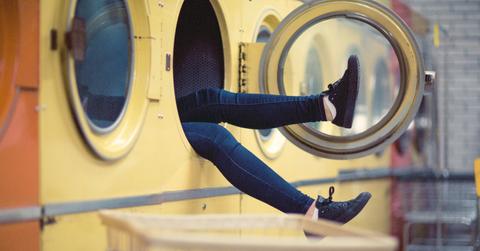8 Eco-Friendly Ways To Maximize Your Dryer's Efficiency
Clothes dryers account for up to 20 percent of all energy use in the United States. But on days when you're in a rush or can't use your outside clothesline, here are some tips for making your dryer as energy efficient as possible.
Updated May 26 2019, 8:03 p.m. ET
Clothes dryers account for up to 20 percent of all energy use in the United States. So if you want to save energy at home and reduce your carbon footprint, one of the easiest switches you can make is to using a clothesline instead of a dryer. There’s just no comparison between the net-zero draw a passive solar clothesline has and the energy used by dryers—even the new, “energy-efficient” models.
But there’s also no comparison between clotheslines and dryers when it comes to speed, wrinkle and lint removal, and the potential for laundry mildew when it’s humid or raining out. So in the instances when you are set on using a dryer, here’s how to be as energy-efficient as possible.
Situate your dryer on an outside wall.
The less distance your dryer’s exhaust has to travel, the more energy you’ll save. You want as few elbow bends and feet of dryer piping as humanly possible for maximum efficiency.
Go with natural-gas dryers.
If your home is being run off a renewable resource such as solar, then a high-efficiency, electric dryer will certainly be the best option. Short of that, natural gas is just about always cheaper than electricity and has fewer negative environmental impacts.
Make sure your washer has a high spin speed.
Evaporating water in the dryer takes significantly more time and energy than letting your washer do the work during the spin cycle. Make sure your washer has a high spin speed or extended spin option to significantly increase the efficiency of your dryer when you switch the laundry.
Switch to smooth ducts.
Every bend in a dryer duct increases the amount of energy required to push exhaust air out. That’s true of elbow joints in your dryer’s exhaust piping, and it’s true of pleated, flexible ducts. In addition to reducing the amount of elbow joints, switch to smooth ducts. Wash and dry similar fabrics together. If you wash a full load of clothes that need to be tumble-dried, you’ll be able to dry them all in the same load, as well. Similar fabrics with similar washing and drying needs will cut down on drying time and save you energy (and the integrity of your clothes) in the long run.
Do away with dryer sheets.
The chemicals in most dryer sheets are skin irritants and totally unnecessary for fresh-smelling clothes. If you want to add some fragrance to your duds, just add some drops of essential oils to the wet laundry before starting the dryer.
Work with the heat, not against it.
By keeping your dryer in a warmer part of your house and drying loads of laundry in rapid succession, you can reduce the amount of time and energy your dryer requires to heat up.
Dry full loads each time.
Dryers are most efficient when they’re working on full loads as opposed to partial or overly full loads. Always make sure you’re drying entire loads, every time.
Reduce the heat.
Most machine's highest heat settings are significantly warmer than is necessary to dry clothes efficiently. Switch your dryer to low heat, delicates, or permanent press to lower the temperature without sacrificing dry time.
